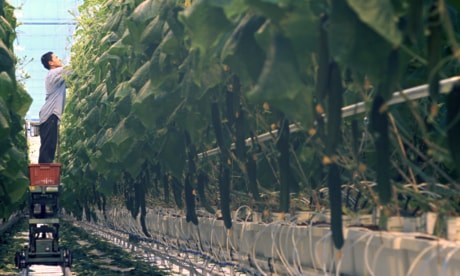Forty years ago, a young Dutch immigrant began growing tomatoes in a small greenhouse near Lacombe.
Joe Doef’s business has evolved significantly since, but never as much as in 2010.
Doef’s Greenhouses, which Joe operates with sons Eric and Paul, and son-in-law Phil Visscher, underwent a $7.5-million expansion between May and November. Its greenhouse footprint grew from six acres to 11, and it now boasts several state-of-the-art technologies.
“It took a good year and a half to two years of planning before we started to build,” said Eric Doef, adding that much of the required equipment was brought in from the Netherlands — a global leader in greenhouse production.
“We had over 50 containers come here from Holland on the ocean.”
Those technologies include a diffused glass ceiling, which is stronger than the traditional polyurethane sheets and reduces the intensity of bright sunlight.
“It also redirects the light deeper into our crop,” said Doef, explaining that the sunlight hits the plants from a myriad of angles.
“It’s actually the third greenhouse in the world (and the first in North America) to have this glass,” he pointed out.
The new greenhouse has two computer-controlled blackout screens above the plants that can be opened and closed. These trap heat and prevent light from leaving the greenhouse at night.
At seven metres, the addition is about three metres taller than the old greenhouse buildings. This extra area helps reduce plants’ exposure to cold air when the building is being vented, said Doef.
“It’s basically a bigger buffer,” he pointed out, adding that approximately 50 vertical fans also push warm upper air down through plastic tubes to reduce energy costs.
A new boiler and irrigation system allows carbon dioxide to be injected directly into the plants, which Doef said is much more effective than absorption of ambient CO2.
Other new features include a misting system that maintains humidity, and plant troughs built off the ground to improve accessibility and make cleaning easier.
The new facilities are being used exclusively for long English cucumbers, with Doef’s Greenhouses’ other winter products — tomatoes and mini cucumbers — moving to its old greenhouse space. The first planting took place in mid-November.
“We’re starting to produce, and the crop looks really good.”
Not only will the additional space boost production, plants there will grow faster than in the older greenhouses.
“I’d say we gain another 15 to 20 per cent with this new technology we have,” said Doef.
With the extra pruning, picking and other plant management now required, staff is growing by about 15 people, to 35, he said.
The expansion was done in large part to accommodate the second generation of family members who are involved in the business. The investment was high, but a $2.3 million interest-free loan through the federal government’s Agri-Opportunities Program helped.
Most of Doef’s Greenhouses output is marketed through Pik-N-Pak Produce, a growers group consisting of Doef’s, TR Greenhouse and Gull Valley Greenhouse that sells cucumbers, bell peppers, tomatoes and other products throughout Central and Northern Alberta, including Edmonton.
Doef’s Greenhouses also sells under its own name at a number of farmers’ markets.
Eleven acres of greenhouse space might impress most Albertans, but the business would actually be a mid-sized operation in British Columbia or Ontario, said Doef.
“There are greenhouses in Canada that are 10 times the size of what we are.”
hrichards@www.reddeeradvocate.com
